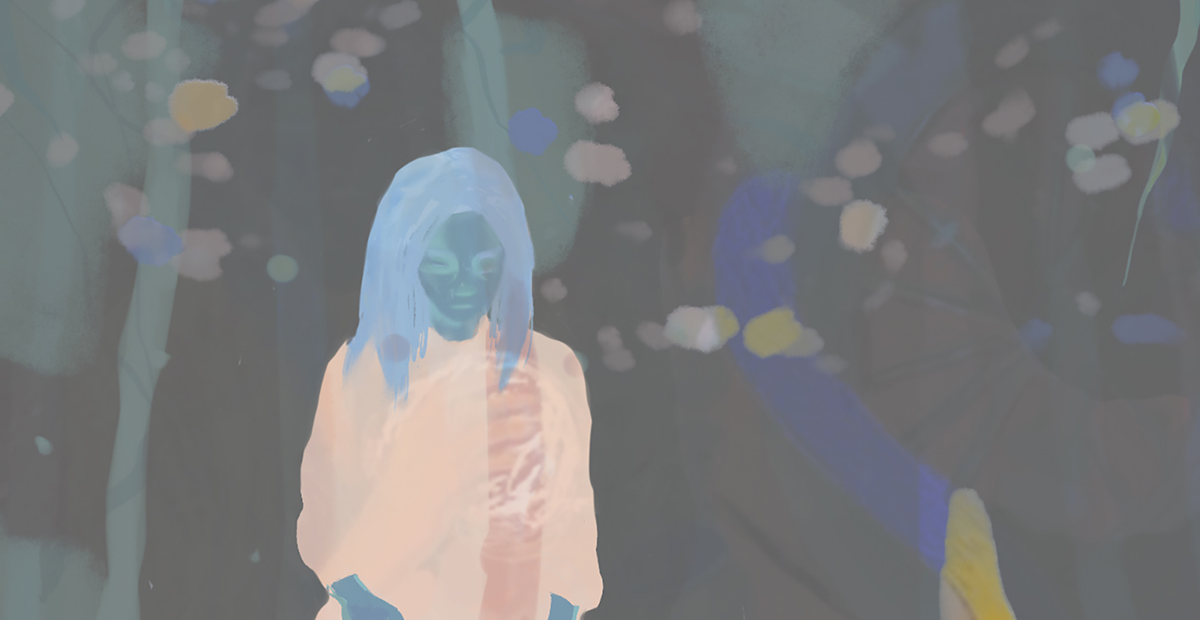
Residency from August 23rd to October 18th, 2022
At Ada X
Naghmeh Sharifi’s residency project, Fading Fables (Zar-Afshun), is an audio-visual installation inspired by an old Iranian fairytale told to Sharifi by her grandmother as a bedtime story during the Iran-Iraq War. This tradition of oral storytelling has been one of the sole means of passing down old fairytales and fables from one generation to the next. Sharifi’s grandmother, like many other women of her generation, lived within a male-dominated society. While denied many rights, she played a key role in preserving these stories and ensuring their survival. Fading Fables will bring together Sharifi’s late grandmother’s narration and the artist’s animated illustrations. With this project, Sharifi highlights the role women have played in preserving oral storytelling traditions and exercises her own agency by creating the representation she, and other young girls, lacked in post-revolutionary Iran.
***
Sineh-be-sineh
Text by Prachi Khandekar
“Nostalgia is a trapdoor to the body’s archive. Through it, we access bygone moments, tethered in place by memory.
Fading Fables (Zar-Afshun) explores a nostalgia that has no anchor in the past, one that lingers in the absence of representation. Growing up, Canadian-Iranian artist Naghmeh Sharifi didn’t see her likeness in books or on screen. The erasure or modification of female figures in the media after the Islamic Revolution meant that within a generation, all depictions of femininity had been swallowed up by fabric.
Sharifi came to recognize this scarcity of representation when she – a trained visual artist – struggled to illustrate a bedtime story from her childhood. She wished to honour her beloved grandmother, the keeper of stories in her family, using voice recordings captured before her passing. But what might a heroine of an Iranian folktale look like? The artist’s mind could only regurgitate imperfect visual references, based on forms of girlhood smuggled in from the West.
She set out to invent this heroine. The result is an animation that shows the tussle between marking and erasure, as the artist attempts to fill the inaccessible fragments of her own identity. Zar-Afshun, the story’s heroine, changes constantly. She must be formed again and again, until she becomes a container for all figures that were once wiped clean.
Projected on layers of fabric, the work creates the conditions to enter Sharifi’s longing for her late grandmother. It conjures a draped, floaty presence with a distinctive storytelling voice. A spectre of softness.
The display also acknowledges the fragmented nature of memories, for Sharifi is careful not to glamorize the past. The artist celebrates her grandmother’s resilience within the patriarchy and equally contends with her role in perpetuating its norms.
Where does the heroine’s journey take her? The end of the fable seems irrelevant, just as it seems irrelevant to settle on a singular figure to depict Zar-Afshun. In this discovery, we glimpse the true heroine of this work: iteration. The essential force powering slow, evolving acts like re-telling tales over generations; persevering against oppression; or constructing identity in exile.
Sineh-be-sineh is a Farsi expression which translates to “chest to chest.” It describes the oral tradition of transmitting stories – with voice and heart as instruments. These stories endure because of the women of Iran, who continue to interpret and transmute them despite forces at work to control their bodies and efface their presence.”
Prachi Khandekar is a curator, writer, and designer. She is interested in the overlapping shades of comfort and pain we experience in our interactions with others and with technology. She curates @the.enigma.of.objects, a crowd-sourced exhibition that explores everyday objects and their significance.